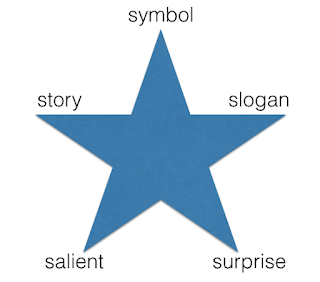How to package your ideas using the Winston star
I came across this advice serendipitously by reading a random Hacker News comment. The advice shows up towards the last 10 minutes of an Artificial Intelligence lecture by Patrick Winston. Winston, a prominent professor at MIT, tells his class that he will disclose them important advice that may make or break their careers. It is about how to pack and present ideas.
His advice is simple. Follow this 5-tip star to pack your ideas better. All the tips start with "S":
Here let me try to apply the Winston's Star method on itself, to make this more concrete.
After some googling I found another relevant video from Patrick Winston. This one is titled "How to Speak". (As always, watch at 1.5x speed.)
Nobody wants to read your shit
His advice is simple. Follow this 5-tip star to pack your ideas better. All the tips start with "S":
- Symbol: use a symbol to make your idea visual and memorable
- Slogan: find a catchy slogan for your idea
- Surprise: highlight the unconventional/counterintuitive/interesting part of your idea
- Salient: focus on the essential part of your idea, remember: less is more, fewer ideas is better
- Story: pack your idea with a story, human brains are hardwired for stories
Here let me try to apply the Winston's Star method on itself, to make this more concrete.
- Symbol: star is the symbol of the Winston's method
- Slogan: with these 5-star tips, you can 5x the impact of your good ideas
- Surprise: you can achieve fame and impact by packaging your ideas better following these simple presentation tips
- Salient: devising a good presentation is as important as having good ideas and doing good work
- Story: these presentation tips are told by a top MIT prof to his undergraduate AI class as secrets to career success
After some googling I found another relevant video from Patrick Winston. This one is titled "How to Speak". (As always, watch at 1.5x speed.)
Related posts
How to present your workNobody wants to read your shit





Comments